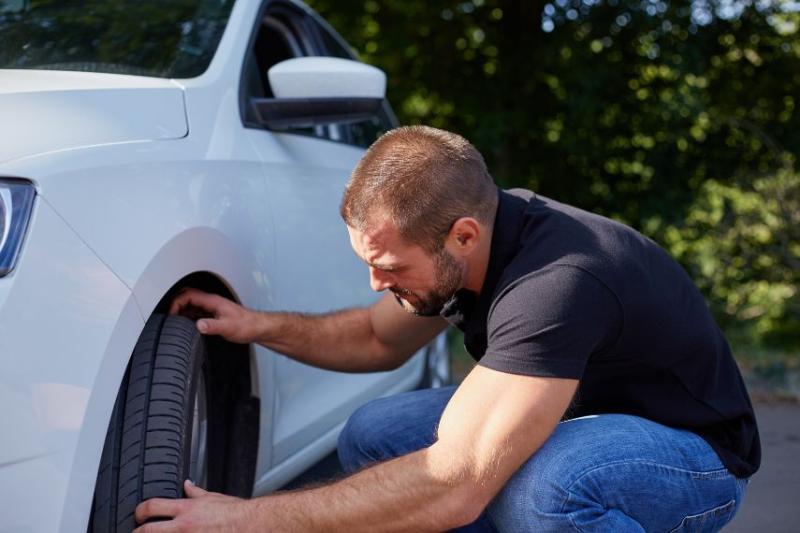
You might be a bit of a car nut – or you may never have even looked at your tyres properly!
Either way, it’s useful to understand what the markings on your tyres mean, from the maximum load they can carry to when they were manufactured.
What is a tyre sidewall?
A sidewall is just the side of your tyre that faces outwards.
It’s the side that’s visible from the outside of your car, or if you were to crouch down and have a look.
How to read a tyre code
Don’t worry if you’re confused looking at the markings on your tyre!
There’s lots of different numbers that mean different things, so it’s not always easy to understand them all straight away.
Your car owner's manual should include some information on your tyres, but you can always refer to our guide to check what they all mean.
How to find your car tyre size
Your car tyre size is a sequence of letters and numbers.
The most common tyre size in the UK is 205/55R16, but yours could be different depending on a few things.
The different numbers and letters all mean different things, which we’ve explained below.
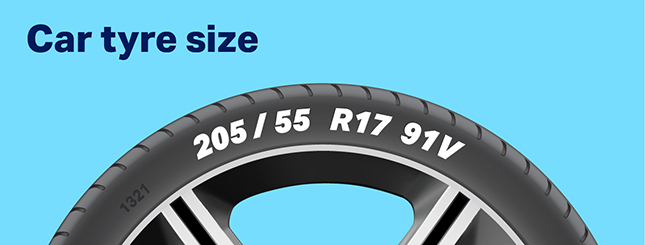
Tyre width
The tyre width is shown by the first three numbers, which is the width of the tyre in millimetres (mm).
That means this tyre is 205mm across.
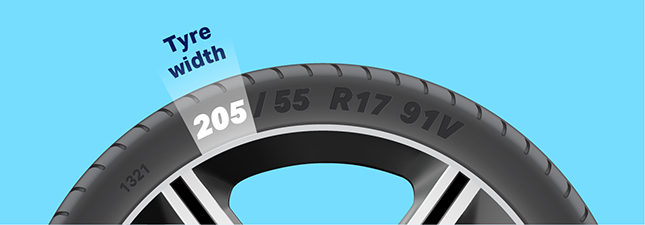
The aspect ratio
The aspect ratio is the fourth and fifth digits of the tyre code and is shown as a percentage of the tyre width.
So, for instance, an aspect ratio of 55% means that the height of the tyre is 55% of its width.
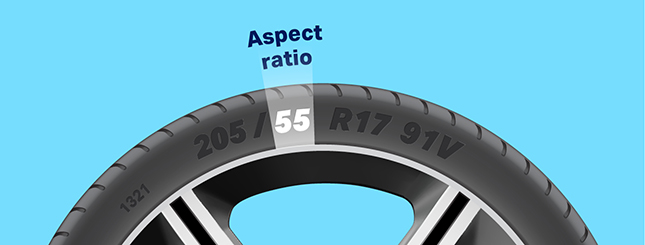
Tyre construction type
There are a few different tyre construction types, but most tyres these days are radial, and are marked with an ‘R’.
Other types include bias belt (marked with a ‘B’) and diagonal (marked with a ‘D’).
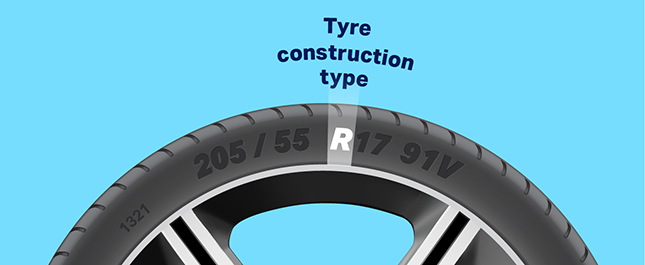
Wheel diameter
The last numbers here mean the wheel diameter.
It’s the wheel rim size that the tyre should be fitted to, in inches.
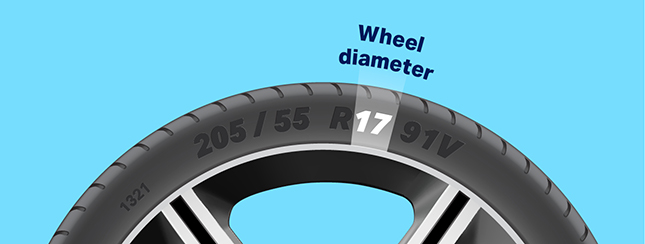
How to read the maximum load
The next part of the sequence of numbers and letters on the tyre is the load rating.
This just means how much weight the tyres can carry.
Tyre sidewall showing which numbers indicate maximum load. Example: 91
It’s the two numbers, just after the tyre size marking and before the speed rating.
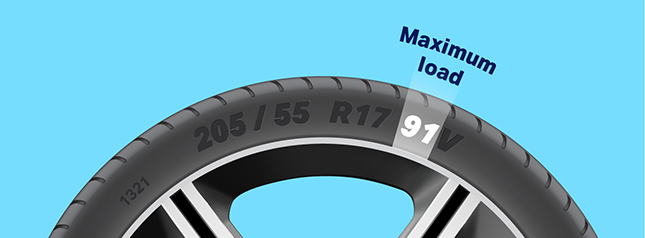
How to read the maximum speed
After the maximum load, you’ve got the maximum speed code.
This is decided by a few different tests which measure how the tyre can handle a speed for a long period of time.
The maximum load is indicated by a number of the alphabet.
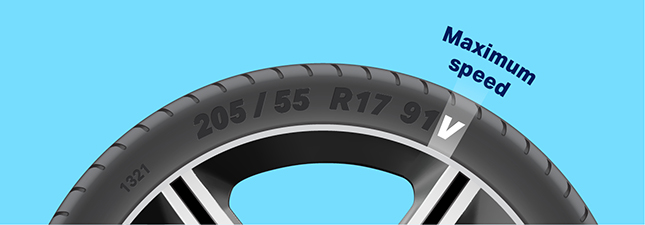
How to identify the brand name and range
This is an easy one – every tyre will have the brand name and range written on the tyre sidewall.
For instance, Michelin Pilot Sport 4 S.
How to read tyre pressure
Somewhere on your tyre, there will also be a marking that says ‘MAX PRESS’ with a value.
This is a rough indicator of the maximum pressure of your tyres, but it’s best to check your owner’s manual for the recommended inflation pressures.
Watch our video guide on how to check your tyre pressure below.
How to read a tyre date code
Your tyre also shows information on where it was manufactured.
This is a four-digit code:
- The first two numbers show the calendar week it was made, from 1 to 52
- The second two numbers show the year it was manufactured
So, a code of 1321 would mean your tyre was made between 29 March and 4 April 2021.
If they’re over five years old, you should probably check your tyres and maybe replace them.

Changing your car tyres
When it comes to finding the right tyres for you, it’s important to remember you can only choose tyres that fit your wheel rim.
You can use your existing tyres (using our guide above!) to find your car tyre size, so you know what you’re looking for.
Also, it may be worth considering winter tyres for certain cars in the colder months. These are specially manufactured to maintain grip in icy or snowy conditions.


